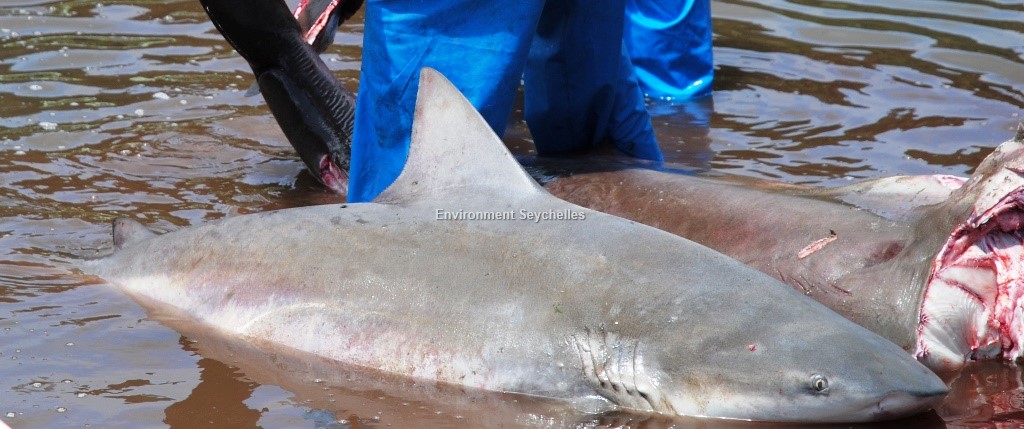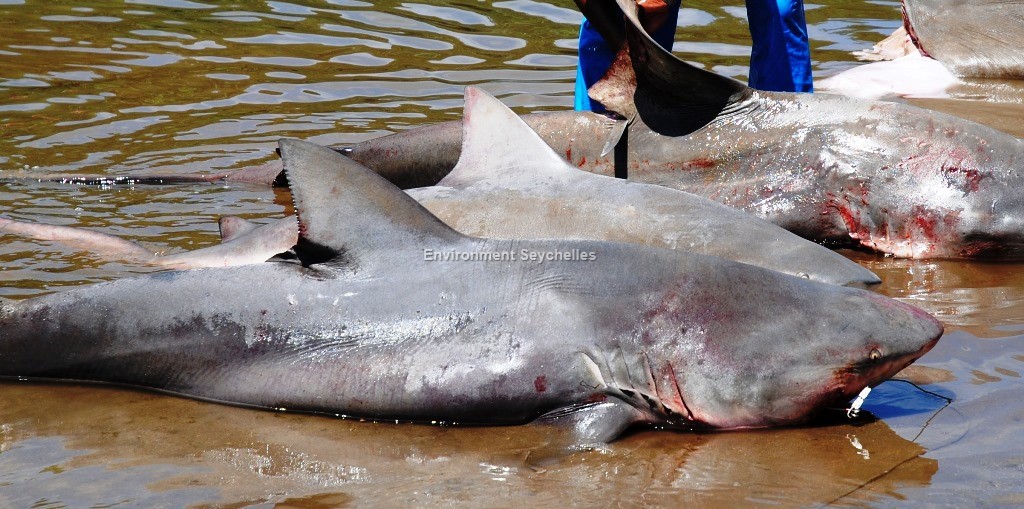Description:
Large heavyset shark with thickset head, very short, broad, blunt snout, small eyes,
Large angular pectorals, high erect triangular first dorsal fin, at least 3.2 times the height of second dorsal, both with short rear tips. No inter-
dorsal ridge. Large triangular saw edged upper teeth.
Colour. Grey to tan-grey dorsally and on flanks, almost white ventrally. Fins plain in adults, with dusky tips in juveniles.
Size:
Born 60 to 72 cm TL. Maturity: Male 195-210cm TL, Female 198-223cm TL, Max Length: 280cm TL.
Habitat and Ecology:
Found in inshore areas near surf line along beaches (depth typically 0-60m, may go as deep as 150m) usually near the bottom. Feeds on teleosts,
elasmobranchs, crustaceans and cephalopods. Prey are typically demersal, associated with soft bottoms. Usually solitary. Viviparous, litters of 6 to 13, gestation is about 12 months. Adults move greater distances, juveniles remain relatively localised.
Fishery Status:
This species is not protected. It is caught in the handline and artisanal longline “drag” fisheries, but appears to be a rare to very rare component of
the catch. Its actual abundance is not clear as local fishers do not distinguish this species from the similar and much more common Bull shark (Carcharhinus
leucas).
It is illegal to fish for sharks with nets (Fisheries Act, Reg 16.c). It is subject to hook and line, short anchored long line and illegal net fishing.
Notes:
First recorded in Seychelles in 2011. (Nevill, J).
C. amboinensis is very similar in appearance to the Bull shark (C. leucas). C. leucas tends to be larger and heavier set but this is hard to distinguish
without respective specimens to compare. A key distinguishing feature is the D1 to D2 size ratio. For C. leucas D1 is less than 3.2 times the height of
D2 whilst in C. Amboinensis D1 is more than 3.2 times the height of D2.
References:
Carcharhinus amboinensis (MÜLLER & HENLE, 1839): In: Database of modern sharks, rays and chimaeras, www.shark-references.com, World Wide Web electronic
publication, Version 02/2021. https://shark-references.com/species/view/Carcharhinus-amboinensis (27/02/21).
Ebert, D.A. et al. (2013). Sharks of the World – A fully illustrated guide. Wild Nature press ISBN 978-0-9573946-0-5
Fisheries Act (2014). Prohibition of net fishing of sharks, Reg. 16c of 1st August 1998. (Carried over from the 1986 Fisheries Act as per Fisheries Act 2014
para 79: Savings and Transitional provisions).
FishIDER (2021). Carcharhinus amboinensis. https://fishider.org/en/guide/elasmobranchii/carcharhinidae/carcharhinus/carcharhinus-amboinensis (27/02/21).
Froese, R. & Pauly, D. (Eds.) (2021). FishBase. https://www.fishbase.se/summary/Carcharhinus-amboinensis.html (27/02/21).
Nevill, J.E.G. et al. (2015). An identification guide for the sharks of the Seychelles Artisanal Fishery.
Simpfendorfer, C. et al. (2021). Carcharhinus amboinensis. The IUCN Red List 2021: https://dx.doi.org/10.2305/IUCN.UK.2021-2.RLTS.T39366A173434051.en. (30/07/23).
Citation:
Nevill, J.E.G. (2021). Carcharhinus amboinensis, Pigeye shark. Seychelles Seatizens. www.seatizens.sc. https://seatizens.sc/species/carcharhinus-amboinensis-muller-henle-1839/
(Updated 30/07/23).




There are no comments